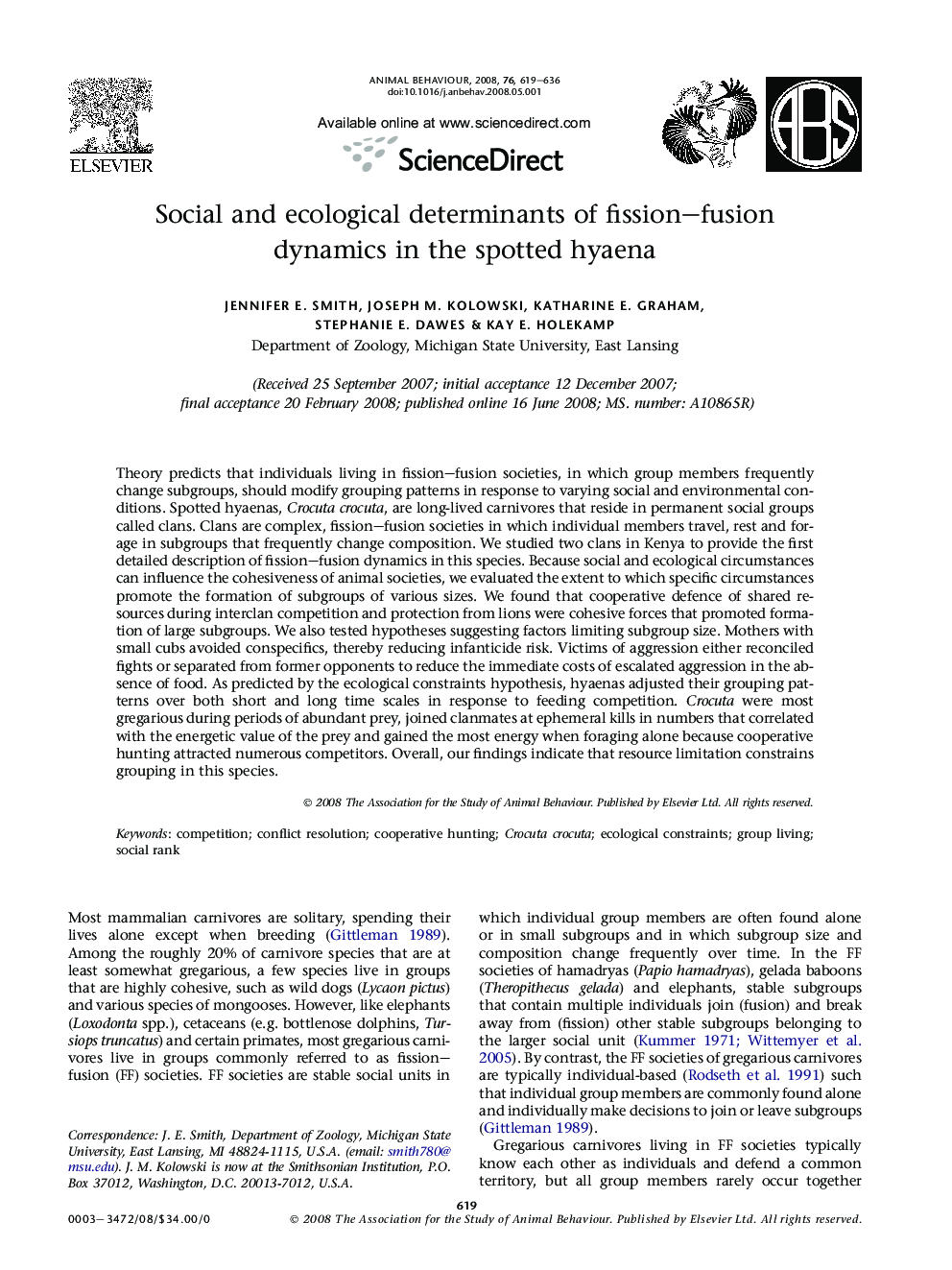| Article ID | Journal | Published Year | Pages | File Type |
|---|---|---|---|---|
| 2418808 | Animal Behaviour | 2008 | 18 Pages |
Theory predicts that individuals living in fission–fusion societies, in which group members frequently change subgroups, should modify grouping patterns in response to varying social and environmental conditions. Spotted hyaenas, Crocuta crocuta, are long-lived carnivores that reside in permanent social groups called clans. Clans are complex, fission–fusion societies in which individual members travel, rest and forage in subgroups that frequently change composition. We studied two clans in Kenya to provide the first detailed description of fission–fusion dynamics in this species. Because social and ecological circumstances can influence the cohesiveness of animal societies, we evaluated the extent to which specific circumstances promote the formation of subgroups of various sizes. We found that cooperative defence of shared resources during interclan competition and protection from lions were cohesive forces that promoted formation of large subgroups. We also tested hypotheses suggesting factors limiting subgroup size. Mothers with small cubs avoided conspecifics, thereby reducing infanticide risk. Victims of aggression either reconciled fights or separated from former opponents to reduce the immediate costs of escalated aggression in the absence of food. As predicted by the ecological constraints hypothesis, hyaenas adjusted their grouping patterns over both short and long time scales in response to feeding competition. Crocuta were most gregarious during periods of abundant prey, joined clanmates at ephemeral kills in numbers that correlated with the energetic value of the prey and gained the most energy when foraging alone because cooperative hunting attracted numerous competitors. Overall, our findings indicate that resource limitation constrains grouping in this species.
